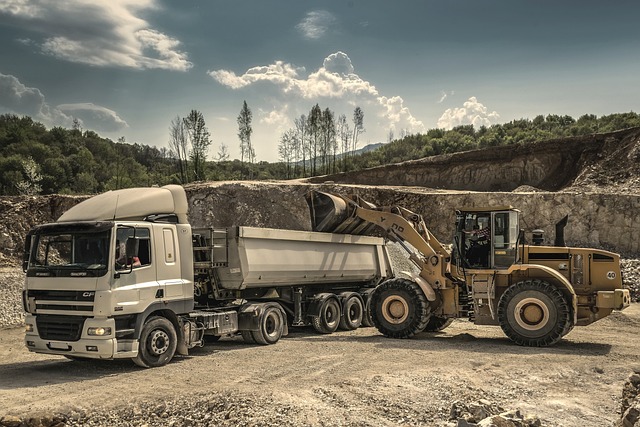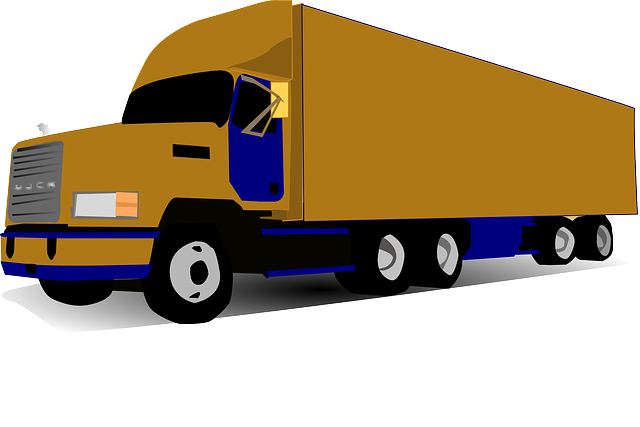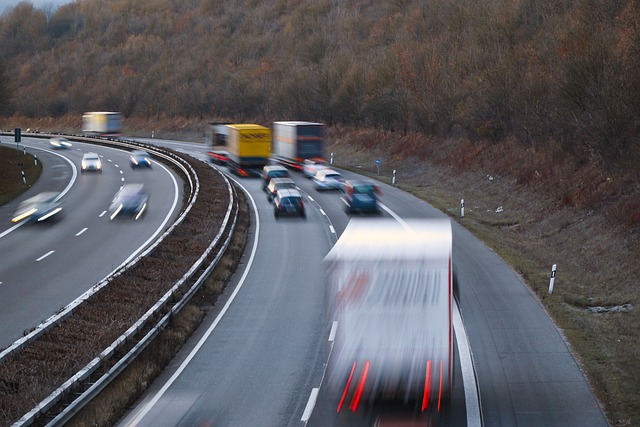The U.S. trucking sector is integral to the supply chain network, encompassing various trucks from light-duty pickups to heavy-duty tractor-trailers. A robust policy framework aims to enhance safety and operational efficiency across this spectrum by addressing distinct needs, optimizing routes with advanced telematics systems, and promoting driver health through regular breaks and ergonomic conditions. The sector is embracing the gradual integration of autonomous technologies as a support system for human drivers. Efforts are underway to mitigate the environmental impact of heavy-duty trucks on emissions by introducing strategic regulations that focus on enhancing cargo capacity, minimizing carbon footprints through improved loading techniques and vehicle design innovations, and transitioning to alternative fuels like electricity and hydrogen, with the development of supportive infrastructure as a priority. Safety standards are being upheld with stringent testing for structural integrity and operational reliability, alongside the deployment of telematics and data analytics to monitor performance and maintenance schedules. Governments worldwide offer incentives for fleet operators transitioning to cleaner energy solutions, emphasizing the importance of comprehensive charging networks and clear regulatory standards for electric trucks. The success of this transition also depends on educational initiatives and public-private partnerships to equip the workforce with the necessary skills for electric truck maintenance and operation. In urban areas, tailored policies are needed to facilitate efficient delivery operations without compromising road safety or traffic flow, promoting electric or hybrid trucks as a means to align with sustainability goals. The future of urban trucking hinges on innovative policies and collaboration between industry stakeholders and municipal governments.
The trucking sector is a vital artery of commerce and trade in the United States, with a diverse range of vehicles serving critical roles from coast to coast. This article explores a robust policy framework aimed at enhancing safety and efficiency for all truck types operating within the country. We delve into strategic regulations tailored for heavy-duty trucks, examining how these measures can maximize cargo capacity while minimizing environmental impact. Additionally, we address the integration of electric and hybrid vehicles in the trucking industry, highlighting key policy considerations and incentives that pave the way for a greener future. Furthermore, we focus on streamlining policies for light-duty trucks to optimize accessibility and delivery services within urban settings, ensuring a comprehensive approach to the evolving needs of the American trucking landscape. Join us as we navigate the complexities of modern trucking policy, with an emphasis on innovation and sustainability in the sector.
- Comprehensive Policy Framework for Enhancing Safety and Efficiency Across All Truck Types in the US
- Strategic Regulations for Heavy-Duty Trucks: Maximizing Cargo Capacity and Reducing Environmental Impact
- Integrating Electric and Hybrid Vehicles into the Trucking Sector: Policy Considerations and Incentives
- Streamlining Policies for Light-Duty Trucks: Balancing Accessibility and Delivery Needs in Urban Environments
Comprehensive Policy Framework for Enhancing Safety and Efficiency Across All Truck Types in the US

In the United States, the trucking industry is a vital component of the supply chain network, with diverse truck types serving different purposes and routes. To address the multifaceted nature of this sector, a comprehensive policy framework is essential for enhancing safety and efficiency. This framework should encompass all truck categories, from light-duty pickups to heavy-duty tractor-trailers, ensuring that each type adheres to stringent operational standards. Policies must account for the unique challenges faced by each truck class, including their specific emissions, fuel consumption, and impact on roadways. Implementing advanced vehicle telematics can provide real-time data to optimize routes and reduce idle times, thereby improving overall efficiency while minimizing environmental footprints.
Furthermore, the policy must prioritize the well-being of drivers, who are the backbone of the trucking industry. This includes mandating regular breaks, providing ergonomic driving environments, and advocating for improved driver training programs. The integration of autonomous vehicle technologies should be carefully planned within this framework to complement human drivers, not replace them. By harmonizing these approaches, the policy aims to create a safer, more efficient, and sustainable trucking ecosystem that can adapt to future advancements and challenges in the industry.
Strategic Regulations for Heavy-Duty Trucks: Maximizing Cargo Capacity and Reducing Environmental Impact

The trucking industry’s heavy-duty trucks represent a significant portion of transportation emissions. To address this, strategic regulations are being implemented globally to enhance cargo capacity while simultaneously reducing the environmental footprint of these vehicles. One key area of focus is the optimization of freight efficiency through better loading practices and advancements in vehicle design. These measures not only improve fuel economy but also contribute to a reduction in greenhouse gas emissions. Additionally, the integration of alternative fuels such as electricity or hydrogen into heavy-duty trucks is being encouraged, with supportive infrastructure development being prioritized to facilitate this transition. Such initiatives are crucial for aligning the trucking sector with sustainability goals, ensuring that cargo transportation remains both robust and environmentally conscious.
In parallel with these environmental strategies, regulatory bodies are also considering the safety aspects of heavy-duty trucks. Ensuring that these vehicles can handle increased cargo capacity without compromising on road safety is paramount. This involves rigorous testing and certification processes to guarantee structural integrity and operational reliability. Furthermore, the implementation of telematics and real-time data analytics allows for the monitoring of vehicle performance and maintenance needs, thereby preventing potential accidents and downtime. The harmonization of these regulations across different jurisdictions is essential to create a unified standard that promotes both efficiency and safety in heavy-duty trucking operations.
Integrating Electric and Hybrid Vehicles into the Trucking Sector: Policy Considerations and Incentives

The integration of electric and hybrid vehicles into the trucking sector presents a multifaceted challenge that necessitates comprehensive policies to address the diverse needs of various truck types, from heavy-duty load carriers to delivery vans. To facilitate this transition, governments worldwide are implementing incentive programs that reward fleet operators for adopting cleaner energy alternatives. These incentives often take the form of tax credits, subsidies for charging infrastructure, and grants for technology development, thereby reducing upfront costs and encouraging investment in eco-friendly trucks. Policies must also ensure the viability of electric and hybrid trucks by addressing range anxiety through robust charging network expansions and providing support for long-haul routes where traditional fuel vehicles currently dominate. Additionally, the establishment of clear regulations and standards for electric truck performance and safety will foster industry confidence and accelerate market penetration, ultimately reducing carbon emissions and enhancing air quality in densely populated areas.
In parallel with financial incentives, educational programs and public-private partnerships are vital to prepare the workforce for the maintenance and operation of these new technologies. The trucking sector, a cornerstone of global supply chains, is at a pivotal point where policy decisions made today will shape its environmental impact and operational efficiency for years to come. As such, a coordinated approach that integrates incentives, infrastructure development, and workforce training will be instrumental in ensuring the trucking sector transitions smoothly into an electric future. Policymakers must collaborate with industry stakeholders to create a roadmap that not only promotes innovation but also ensures equitable access to the benefits of these new technologies across the entire spectrum of trucking operations.
Streamlining Policies for Light-Duty Trucks: Balancing Accessibility and Delivery Needs in Urban Environments

The regulatory landscape for light-duty trucks within urban environments is undergoing significant transformation to address the dual demands of increased accessibility and the efficient fulfillment of delivery needs. Policymakers are tasked with the delicate balance of enabling the proliferation of these vehicles without compromising the safety and flow of traffic in densely populated areas. Innovative trucking policies that account for the unique operational characteristics of light-duty trucks, such as their size and weight, are essential to ensure they coexist harmoniously with passenger vehicles. These measures include optimizing routes for faster delivery times while minimizing congestion and emissions, thereby promoting both economic activity and environmental sustainability in city centers.
To effectively streamline policies for light-duty trucks, it is imperative to consider the varying demands across different urban environments. This necessitates a tailored approach that takes into account factors like traffic patterns, local business needs, and the geographical layout of each city. The trucking industry must work closely with municipal authorities to implement flexible zoning laws and designated delivery hours that accommodate the influx of goods without causing disruptions. Additionally, incentivizing the adoption of electric or hybrid models within the trucking sector can significantly reduce the carbon footprint associated with urban deliveries, aligning policy objectives with sustainable practices.
In conclusion, the implementation of a comprehensive policy framework tailored to address the diverse needs of the trucking industry is critical for enhancing safety, efficiency, and environmental sustainability across all truck types in the United States. The strategic regulations developed for heavy-duty trucks aim to maximize cargo capacity while minimizing their environmental footprint. Meanwhile, the integration of electric and hybrid vehicles within the sector represents a pivotal step forward, necessitating policy considerations and incentives to facilitate this transition. Additionally, the streamlining of policies for light-duty trucks underscores the importance of balancing accessibility with delivery needs in urban settings. Taken together, these initiatives not only promise to modernize the trucking industry but also ensure its continued role as a cornerstone of the American economy and a steward of environmental health.
